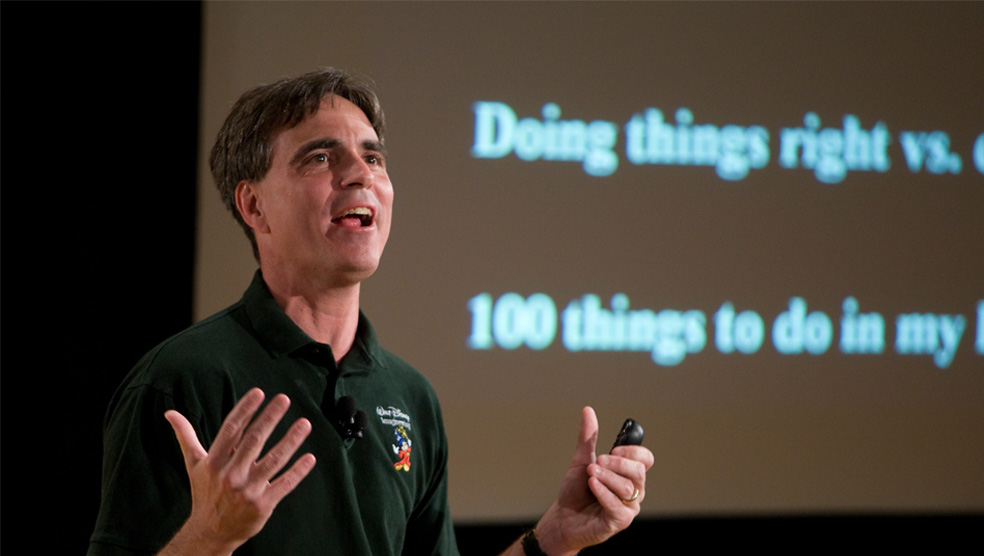Answering Chicago’s “Questions to Pose”

The University of Chicago has produced a list of “Questions to Pose” that parents and community members can use to understand if a financial education program in their school is unbiased and high-quality. We answered them all, for anyone who is considering a GiftingSense.org workshop. If you would like to discuss any of our answers, please reach out via the contact us form.
What specific financial education program is my student using in school? Gifting Sense, a mission-driven provider of workshops and tools (available at no cost) designed to allow children to experience first-hand, how and why thinking before buying is a powerful and rewarding life skill.
Who is the author or creator of the materials? Karen Holland, an Economist, and parent. Karen has a Master’s Degree in Economic History from the University of Toronto, and an Honours Bachelor of Arts Degree in Economics from Queen’s University at Kingston, Ontario. She worked as an Analyst (in Human Resources, Sovereign Risk, Financial Institutions, and Corporate Treasury) for the Royal Bank of Canada before having a family. She has been working on the Gifting Sense Project since 2014. She relishes any opportunity to discuss in detail why thinking before buying is the cornerstone of financial literacy.
Is there a potential conflict of interest? Gifting Sense operates without any sponsorship or third-party support. The project has been bootstrapped since inception. There are no conflicts of interest. The dream is to partner with a large charitable foundation (Pivotal Ventures, The MacArthur Foundation, Bloomberg Charities…) that shares our values. This would allow us to scale the ongoing delivery of workshops once demand outstrips existing capacity to deliver them.
Is there advertising or branding from financial institutions or products on the materials? None.
Are there incentives for students and/or teachers to use the program? If so, how might those incentives influence students’ learning? The only incentive for teachers is that they can bring financial literacy to life by dedicating (just one) class to letting students work on a real-world problem that matters to them: “Should I buy this item or experience?” Because when students discover that thinking before buying does NOT mean you never getting to do or buy anything fun, asking basic financial questions quickly moves from an intimidating task to a powerful tool.
Today’s children are digital payment system natives, who can find themselves making some very fast and seemingly painless shopping decisions. There is nothing wrong with digital payment methods or online shopping, both can be super efficient and helpful. But today’s parents learned that money was scarce, and that spending came with built-in trade-offs, largely as a result of the physical and visual cues that using cash provided. When your pockets were empty, you couldn’t buy anymore.
Calculating the DIMS – Does It Make Sense?® Score takes all of three minutes. It’s just a little “speed bump”; slowing down the pace at which modern kids shop. It re-inserts some of the “pause before purchase” time that spending cash naturally provided to their parents.
And guess what? Children are fully capable of making well-thought-out consumer decisions when we give them a tool that lets them quickly, consistently, appreciate the full cost of an item or experience, as well as how much they’ll really use or appreciate a purchase, before, any money is spent!


The problem Gifting Sense solves is the lack of step-by-step instruction on how to spend wisely, that feels immediately helpful to us when our money personalities are still being developed, i.e. during childhood and ideally before the end of Grade 9.
Instead of having to work to uncover and then re-engineer less than productive money habits as adults, why not just create circumstances under which we can develop productive money habits in the first place?
Do the materials encourage the use of a particular financial institution’s or company’s product(s)? No.
What data is being collected by the materials? When is it purged? How is it stored? We collect no personal information. We have every completed digital worksheet, so we know what DIMS SCOREs have been calculated for (a lot of SmartPhones, running shoes, professional sporting event and concert tickets…) but not by who, nor if a purchase was ever made.
What is done with student data collected by the materials? No student data is collected. There is no registration, nor paywall requirement to use the DIMS SCORE® calculator. We are a mission-driven organization. We want to make it as easy as possible for children from all economic realities to experience how being financially responsible is rewarding not boring. We want as many children as possible to understand how much agency they have over their personal financial futures. People always ask us “how we make money”. We don’t. We’ve found an efficient and easily repeatable way to solve a problem, and want to share it with as many families, communities and schools as possible.
What are the goals of the materials? The program and tools we employ are designed to allow children to experience first-hand, how easy it is to get and use (at first basic) financial information to make their lives better. And they are designed to give young people this first-hand experience when their money personality is still being developed. The timing is key because the unconscious habits and beliefs we develop about money between the ages of 3 and 14, are incredibly stable, informing how we think and act with money for the rest of our lives. Having a positive money-management experience before the end of middle school really matters!
What problem(s) do the materials aim to solve? The problem we are solving is the lack of step-by-step instruction on how to spend wisely, that feels immediately helpful to kids, when their money personalities are being developed.
The DIMS SCORE® Calculator lets kids work on a problem that matters to them (“Should I buy this?”), with real-world impact that can be publicly displayed. It lets them experience that they can make a difference in their world… when their money personalities are still in development. Again, the timing is key because the habits and beliefs we develop about money when we’re young are incredibly stable.
Instead of having to work to uncover and then perhaps re-engineer less than productive money habits as adults, why not just create circumstances under which children can develop productive money habits in the first place?
What are the priorities of the program?
- Allow children to experience first-hand, that thinking before buying (TBB) does not mean that you never get to do or buying anything fun; it’s about about making sure you understand the full cost of a purchase, and how much you can use or appreciate what you buy, before you buy it.
- Which lets children understand that being financially responsible does a whole lot more than just “save money”. TBB lets us avoid disappointment, reduce waste, improve family harmony/ financial well-being, and gives us all an immediate way to protect the planet.
- Which gives school-aged children an age-appropriate sightline as to how they can live the life they want, without spending more than they make, before they become adult income earners. Again, the timing is key. We’re giving kids good basic spending habits before the consequences of poor spending habits can land them in an early financial pitfall.
Do the materials address the roles of financial institutions in the financial system? Only in that financial institutions provide the majority of digital payment methods. With older workshop participants, there can be a discussion about how credit scores are built and used, but 98% of the time we focus on the importance of taking a quick pause before making a purchase. It doesn’t matter if you are going to pay for a potential purchase with cash, a gift card, debit card, credit card, ApplePay, Venmo or Interac…we hope children will pause, and calculate the DIMS – Does It Make Sense?® Score before they spend a dime.
Does the program provide information that serves the interests of financial institutions or companies, or does the information serve a different purpose? The program only serves students, their families and schools.
How do participants benefit from the messages in the materials? Workshop participants learn that it isn’t hard to ask and answer basic questions about typical childhood purchases, but that it can be very rewarding. In other words, they learn about the power and importance of financial defense (spending with a plan). Most kids today dream of vocations that come with high incomes, because they feel that financial offense (earning) matters more than financial defense. But every citizen needs both financial offense and financial defense, to create personal financial peace of mind.
How might participants change their behaviour as a result of the program? Being good with money is a pursued interest. When do humans typically decide to pursue a skill? When they can observe or experience it and think to themselves, “that looks like fun” or “that looks helpful”. We help children experience how easy it is to get and use (at first basic) financial information to make their lives better. And because we give them this experience when their money personalities are still in development, they’re able to enter young adulthood, confident about their ability to seek out the more sophisticated financial information they’ll need later in life, when it is relevant and can be helpful. Simply put, early financial education solves so much.
To what extent does this behaviour change benefit the vendor? The only way the program benefits Gifting Sense is that it helps us deliver the difference we want to make. What’s the adage? “Be the change you want to see.”
What are the advertised benefits of the program? Have these been proven? The advertised benefits of the program are that it brings financial literacy to life for children in a way that is relevant to their young lives and so much more helpful to developing productive money habits than say a lesson on mortgages – twenty years before you need one. The knowledge children acquire in our workshops is fundamental, but because it is centred around helping them assess, compare and categorize purchase(s) they’re already thinking about, it helps them avoid disappointment in real time. Engaging lessons stick, and cannot help but inform future financial decisions!
We are happy to share the feedback we have received from parents, educators and perhaps most importantly, kids, over the years. Reach out via the contact us form and we’ll send you the Explainer Deck we share with educators when we’re scheduling workshops. Please also see the testimonials listed at the bottom of our home page, or the organizations that list us a trusted resource in our FAQ, to assess if our claims have been substantiated. We have offered to participate in several third-party assessments. To date, no one has taken us up on it.
Have the materials been evaluated by an independent reviewer? We have been recognized at both the 2022 and 2023 Money Awareness & Inclusion Awards. In addition, parents, educators, personal finance authors and experts, regularly speak about how our platform and tools help children and families. Perhaps most importantly, kids tell us all the time “…you explained that so well…”, or “…I just never thought of it that way…”. Our advertising is “word of mouth”.
We have given workshops (via Zoom since the Spring of 2020) across Canada and the United States, as well as in Argentina, Mexico, Korea, Malaysia, the United Kingdom and Sweden! The list grows every week. Workshops are typically delivered in schools or community centres, but also recently through Outschool, where we have been able to work with home-schooled learners.
Have the materials been found to be objective? Yes. Take thinking before buying for a test drive and see for yourself.
Do the materials only provide partial information? Our focus is on wise-spending but in the following context: Personal finances are no different than team sports, to “win” you have to be both offensive (earn) and defensive (spend wisely). Most adults know they should spend less than they make (and ideally invest the surplus for their future). The struggle is how? How can we live the life we want, and spend in a way that allows us to create an investable surplus, at almost any income level? We can start by becoming more thoughtful consumers. Because two-thirds of citizens around the world make purchases they never fully use or appreciate.
Who among us wasn’t ever asked as a child what they might like to receive for an upcoming birthday or holiday gift, how best to spend “back-to-school” dollars, or even just what to have for dinner? Treating these ordinary questions as the natural opportunities they are to give kids wise spending habits, gives today’s youth a sightline as to how they might create an investable surplus at almost any income level.
Do the materials deemphasize information that will help students think critically about certain financial institutions, companies, or products? The opposite. Our workshops, tools and process show how easy and important it is to quickly, but not arbitrarily, assess a possible purchase in time to assure it makes sense for the buyer and their family.
If you want to know more, please click on the pink or green buttons below.




